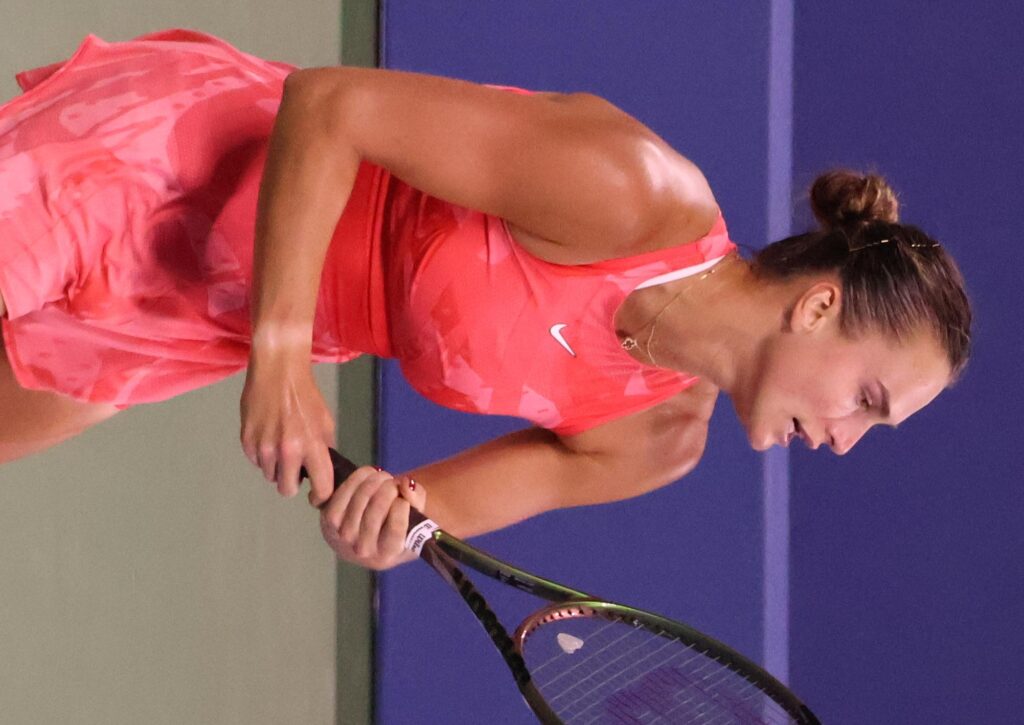In a‌ surprising ⁤turn of events at the US Open,Aryna Sabalenka’s signature nike ​dress,which ⁤was ⁤designed exclusively for⁣ the Belarusian star,has lost its aura of exclusivity. ⁣Qualifier⁢ Alycia Parks stepped onto the ​court wearing the same striking ensemble, ⁢raising ⁤questions about branding, athlete sponsorship, and the fine line⁣ between personal identity and commercial representation​ in professional sports. As fans and players alike react to this⁤ unprecedented fashion crossover, the‌ incident highlights the complexities of athletic apparel in a competitive landscape, where ‍trademark styles can quickly become accessible ​to ⁣rising ⁢talents from the ranks of professional tennis. This unexpected sartorial ‌twist not only underscores the evolving dynamics of sportswear marketing but also opens the discussion about ⁣originality⁤ and the meaning of personal branding​ within the world of elite athletics.
Sabalenka’s Custom ⁣Nike Dress Redefined by⁣ Unexpected Qualifier Appearance at US Open
Aryna Sabalenka’s most recent on-court ensemble‚Äîa custom-designed dress ‚Å¢by‚Å£ Nike‚Äîwas initially positioned ‚Å¢as a hallmark of exclusivity for ‚Å£the Belarusian star. The sleek, aerodynamic cut, characterized by its bold colors and modern silhouette, promised to elevate her‚Äå performance‚Äå while ‚Å¢making a statement on‚ŧ the Grand Slam‚ŧ stage.However, ‚ŧthe ‚ŧsense of uniqueness surrounding ‚Äçthe dress was abruptly diluted when an‚Å¢ unexpected qualifier was seen sporting the same outfit during ‚Äçthe US Open, ‚Äçsparking discussions ‚Å¢among fans and ‚ŧpundits alike about the implications of brand exclusivity in professional sports.
This incident has ignited a broader conversation regarding athlete branding and the marketing strategies employed by major sportswear companies. ‚ÄåSeveral factors contribute to this topic:
- Branding consistency: The occurrence raises questions about how brands maintain the exclusivity and uniqueness ​of their top ‌athletes’ gear.
- Market ⁤Accessibility: ⁣ The decision ​to allow a lower-ranked player to don the⁤ same dress opens ‍doors for ⁣discussions about democratizing elite sportswear.
- Fan Perception: How will fans react to seeing ‌their ⁤favorite stars possibly overshadowed by less renowned players in identical apparel?
This perplexing turn of events acts as a poignant⁤ reminder that in⁢ the fiercely competitive ‌realm of sports,even the most carefully curated images ⁢and styles can be replicated,much to the surprise of athletes and‍ followers alike. As ‍the tournament progresses, it will be intriguing ⁣to observe how this occurrence influences​ both Sabalenka’s performance and the marketing strategies of brands like Nike, as⁢ they navigate the fine line between exclusivity​ and accessibility in the sporting world.
The Impact of Exclusivity in Sports Fashion:‌ A Closer Look at Sabalenka’s Dress Dilemma
The recent decision by a ‌qualifier to don Aryna Sabalenka’s highly anticipated custom Nike dress at the US Open ⁣has ignited a⁤ conversation about⁢ the impact ⁢of exclusivity in sports fashion. Sabalenka’s dress, crafted exclusively​ for her to set her apart on the court, was meant to symbolize her individual branding and competitive⁢ spirit. The visual identity that players like Sabalenka cultivate through unique apparel is crucial, ⁣as​ it not only enhances their presence during matches but ⁢also contributes⁣ to‍ their ‌personal ⁢marketing. However, ⁤the appearance of the same design on another athlete raises questions ⁢about the⁤ value of exclusivity ‌in sports fashion, which often translates into brand prestige and athlete identity.
This‚Å£ incident‚Å¢ highlights the delicate balance between personal branding and accessibility ‚Å¢in sports apparel. While Nike’s intention‚Å¢ might have ‚Å£been to create a signature look for Sabalenka, the realization that the‚Å£ same design coudl be seen on multiple players undermines its distinctiveness. Key ‚ŧimplications include:
- Brand Perception: The brand’s image may become diluted⁢ when exclusivity⁢ is challenged.
- Market Saturation: Increased visibility can lead‚Äå to ‚Å£a saturation‚Å¢ of‚Äå designs,potentially affecting demand.
- Fan Engagement: ‍ Fans often gravitate toward unique uniforms which symbolize their⁤ support ​for specific​ athletes.
This episode presents sports brands ⁢with a strategic dilemma: how ⁣to ‍maintain exclusivity while appealing to ⁤a broader​ audience. As players become ‌increasingly aware of the narratives their on-court attire conveys, the fashion‌ choices they⁤ make can ‍substantially shape their careers and fan connections.
Recommendations for Athletes‚Äå on Brand Partnerships in the‚Å¢ Age of Social Media
In ⁣the ⁢rapidly evolving world of sports branding, athletes must navigate their partnerships‌ with acute ‌awareness, especially in the context of social media exposure. the ​recent incident involving ‌a bespoke Nike dress worn by Aryna sabalenka, later seen ‍on ‍a ⁤US Open qualifier, serves​ as a ‍cautionary tale⁣ about maintaining exclusivity. As brand partnerships frequently enough hinge⁤ on‌ unique designs and personal identity, ​athletes should carefully consider the ⁢implications of widespread visibility. Here are some key recommendations ‍for athletes:
- Engage Before Partnering: Build a rapport with ‚Å¢brands ‚Äãbefore entering into long-term contracts to ensure ‚Äãa shared vision.
- Evaluate Exclusivity: clearly‚Äå negotiate terms that protect the exclusivity of your personal ‚Å£brand and designs.
- Leverage Social Media Wisely: ⁤Use your platforms to curate your image and ensure that your​ chosen partnerships align with your athletic identity.
moreover, effective interaction with sponsors‚ŧ about product visibility is crucial.‚Äã Understanding how brand partners plan to promote athlete-designed items can definitely help in strategizing‚ŧ around solo appearances or shared platforms. For‚Äå visual clarity, here’s a‚Äå table‚Å£ summarizing potential strategies and‚ŧ their benefits:
| Strategy | Benefit |
|---|---|
| Co-Branding Initiatives | Strengthens mutual visibility and expands audience reach. |
| social ⁢Media Campaigns | Enhances‌ personal connection with⁤ fans while amplifying ⁢brand⁤ messaging. |
| Inviting‚Å¢ Feedback | Encourages audience engagement, fostering a sense of community and loyalty. |
To wrap It Up
In‚Äã a surprising twist at this year’s‚ŧ US Open,‚Äå Aryna‚Äã Sabalenka’s‚Å¢ ‘custom’ Nike dress,‚Å¢ originally ‚Äãdesigned to‚Äç set her apart‚ŧ on the court, has‚Å¢ lost its exclusivity after a qualifier donned a similar outfit during her matches. The ‚Å¢incident raises questions ‚Äåabout ‚Å¢the marketing strategies of major sports‚ŧ brands and the notion of exclusivity‚Äå in athlete apparel. As‚Äã discussions‚Å¢ around athlete branding and uniformity continue, this development serves as a reminder‚Å£ of the ‚Äådelicate balance between individuality ‚Äãand commercial ‚Äçinterests‚Äç in the world of professional sports. As the ‚Å¢tournament progresses, all eyes ‚Äçwill be on‚Å£ how thes ‚Å¢dynamics unfold on and off the court.






